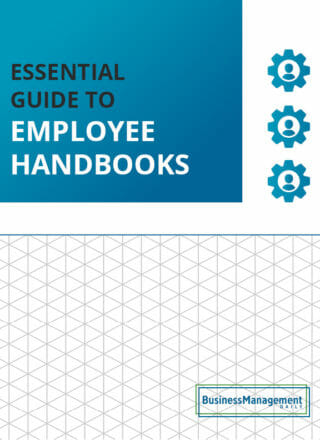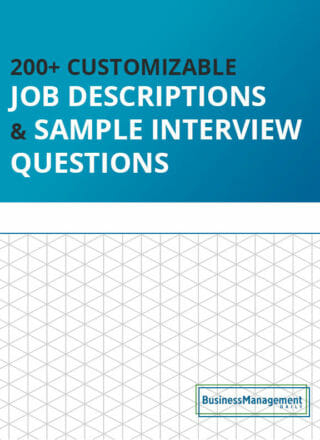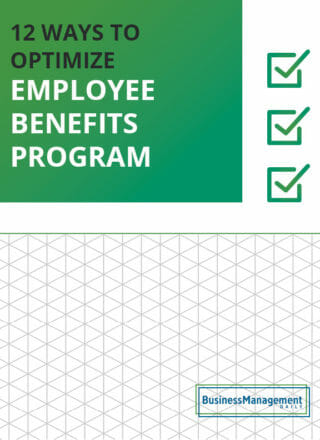
Everyone gets sick sometimes. Therefore, it’s essential to have a sick leave policy in place to give your employees some time off when needed. Crafting detailed company policies is a significant task for business owners or human resources managers. There are plenty of legal considerations and workplace trends to keep up with that will inform how you should build or update your sick leave policy. Explore sick leave policy examples and critical considerations for crafting your policy.
Sick leave is time off, typically paid, that employees can take when dealing with a health concern. It is generally taken for illness, injury, or mental health. Employees can use sick leave to care for an ill family member who needs their assistance. For example, a parent might need to stay home to care for a sick child unable to attend school.
Find out why your business needs a clear sick leave policy.
Written policies are a helpful resource for new employees as they familiarize themselves with your business’ procedures and expectations. Sick leave, and PTO in general, is a top concern for new hires. Providing them with a detailed policy on how and when they will receive their sick leave balance is helpful.
Many states have laws governing sick leave. They may have requirements on the minimum number of days or hours of paid sick leave employers in the state need to offer. Currently, 15 states , including Washington, DC, have paid sick leave laws. Individual cities and counties may also have their guidelines.
State laws also govern sick leave policy issues. These laws can address PTO payout upon termination or specify when employers may require documentation for absences. Crafting a comprehensive sick leave policy and verifying what sick leave laws apply to your business will help you remain compliant.
Employees calling out sick can feel like an inconvenience, but it’s actually a positive thing in the long term. Resting while you are ill is important. Taking time off to ward off work stress and mental burnout is also important. Giving employees paid sick days encourages them to prioritize rest and recovery so they can return feeling healthy and ready to work. Those who don’t take these necessary breaks often experience increased rates of burnout and disengagement.
It’s also worth noting that employees coming in sick negatively impacts the workplace, particularly for onsite teams. One person coming in sick can cause illness to spread throughout your workplace, leading to more absences across your team. Employees who are ill will also be less focused, potentially leading to lower work quality or decreased compliance with safety procedures.
There are several methods of providing sick leave to employees. Here are the most common options.
Many sick leave policies and practices are based on an accrual system. Employees accrue sick leave based on the number of hours, days worked, or by pay period. For example, they may earn 1 hour of sick leave for every 40 hours worked.
This is the most standard option and works well for full-time and part-time employees. The downside of sick leave accrual is that employees will have to wait a while to accrue enough leave for an absence. New hires or those who have taken a sick day recently may have to wait several weeks to accrue 8 hours of sick leave to cover a day off.
Some businesses deposit the entire balance of an employee’s annual sick leave into the employee’s PTO bank at the beginning of the year rather than making them accrue leave throughout the year based on hours worked.
Some businesses prefer offering one bank of PTO rather than separating sick leave and vacation time. This can benefit employees, providing more flexibility in using their allocated PTO.
However, it’s often not advantageous for businesses. In states mandating sick leave payout upon termination, businesses with combined vacation and sick leave balances must likely pay out the total amount. This requirement applies even when the balances are intermingled.
Unlimited PTO is an emerging trend in time off management. Some businesses do away with specific PTO balances or limits in favor of an “unlimited” PTO policy.
This term sounds appealing to potential recruits, which can be helpful in competitive hiring markets. Unlimited PTO can also benefit employees if you maintain a culture that celebrates work-life balance and encourages employees to take time off. However, in many cases, those with unlimited PTO take less time off than those with a set amount of sick leave and vacation.
From a business perspective, unlimited PTO can be a cost saver.If your state requires businesses to pay out unused PTO upon termination, unlimited PTO policies can save you some money as there will be no set balance.
In addition to your paid sick leave policy, employees may be eligible for unpaid sick leave under the Family and Medical Leave Act (FMLA). The FMLA, a federal law, allows eligible employees to take up to 12 weeks of unpaid leave within a year. This job-protected leave applies to qualifying family or medical reasons.
Sick leave policies generally exclude common colds or the flu. However, employees with chronic health conditions or facing a major medical issue can utilize unpaid FMLA leave for additional time off. Review the FMLA requirements to learn if the FMLA applies to your business. If so, be sure to include an FMLA policy in addition to your paid sick time policy in your employee handbook.
As you build your sick leave policy, keep these key points in mind to ensure that your policy provides all of the necessary information.
Mention the intended use of sick leave to differentiate it from other types of leave, such as vacation or floating holidays, but define it sparingly. There’s a growing emphasis on supporting and prioritizing employee mental health. One way to embrace this movement is to encourage employees to use sick leave for mental wellness. Consider explicitly stating in your sick leave policy that employees may take sick leave for physical or mental health concerns or needs.
List the sick leave accrual schedule and/or the annual balance granted. Be sure to mention any special considerations or eligibility requirements for part-time employees. Part-time employees generally should still receive sick leave, but they may accrue it at a different rate. For example, if full-time staff accrue 3 hours of sick leave per pay period, the part-timers may accrue 1.5 hours per pay period.
Only some take sick time frequently so that many employees will have an unused sick leave balance at the end of the year or the end of their employment with your company. Your policy should state how these balances will be handled.
Employers and employees generally view paid time off as part of the employee’s compensation package. Many states require that any earned sick leave be paid out if an employee leaves the company. Currently, 20 states have PTO payout laws related to vacation and/or sick leave, so you must ensure your policy complies with payout requirements.
You’ll also need to dictate how much time employees can carry over from the previous year. Employees typically receive less sick leave annually than vacation. Carrying over time and accruing gigantic leave balances is often less of a concern. Some states have laws that provide guidelines on sick leave caps or carryovers, so check your local laws. Without applicable state laws, five days or 40 hours of sick time is often used as a carryover limit.
Allow at least some carryover, even if not required, unless you provide the total annual sick leave balance at the start of the year. The first quarter of the year includes a portion of cold and flu season and the beginning of allergy season. Employees will likely need a sick day or two before they have time to accrue much leave time.
It’s a common practice to require a doctor’s note if an employee uses sick leave for several days. Typically, employees request a note from a healthcare provider for absences lasting three or more consecutive days. This practice helps verify that sick leave is being used for its intended purpose rather than as vacation time.
Remember that requiring a doctor’s note does create an extra hurdle for sick employees to navigate. Not all health concerns will need a doctor’s visit. As such, you won’t want to ask for documentation for every sick day. Employers should ask employees using accrued paid sick leave concurrently with unpaid intermittent FMLA leave for something other than new sick notes for each absence.
As with any element of your sick leave policy, you’ll want to check your state and local laws for any restrictions or guidelines. Some states have limitations on when employers may request a doctor’s note.
It’s also important to remember that employers cannot access personal medical information or the employee’s medical diagnosis when requesting a doctor’s note. You’ll typically get a short note detailing how long the employee is expected to be incapacitated by illness or injury.
Full-time employees accrue [X] day(s) of paid sick leave at the end of each month, beginning with the first month of employment. Part-time employees will accrue [X] hours of sick leave for every [X] worked. Sick leave may be taken for any bona fide reason related to the employee’s or a family member’s physical or mental health.
Up to [X] days of sick leave may be carried over from one calendar year to the next. Employees are allowed a maximum of [X] sick days in any calendar year. The company will pay out unused accrued sick leave upon termination in accordance with state and local laws.
Employees should promptly notify their supervisor of their intent to use sick leave. For unplanned absences, employees must follow the established call-out procedures. Employees should submit a request in advance if sick leave is to be used for scheduled medical appointments or procedures, following [Company Name] ‘s time off request process.
[Company Name] may request a doctor’s note or documentation if an employee is absent for three or more consecutive days. Employers will not compensate employees who have exhausted their sick leave balance for further sick days and will instead grant them unpaid leave.





